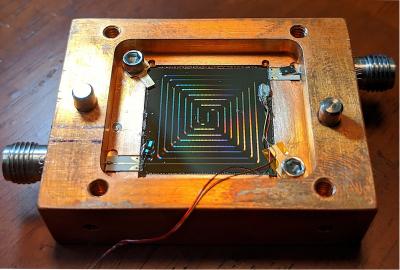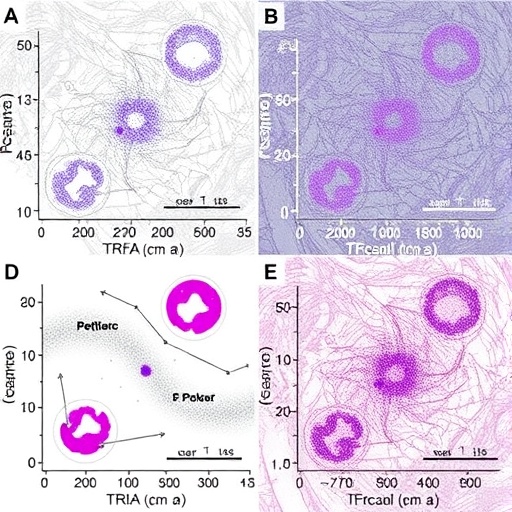
Credit: Wheeler/NIST
Researchers at the National Institute of Standards and Technology (NIST) have invented a miniature thermometer with big potential applications such as monitoring the temperature of processor chips in superconductor-based quantum computers, which must stay cold to work properly.
NIST’s superconducting thermometer measures temperatures below 1 Kelvin (minus 272.15 ?C or minus 457.87 ?F), down to 50 milliKelvin (mK) and potentially 5 mK. It is smaller, faster and more convenient than conventional cryogenic thermometers for chip-scale devices and could be mass produced. NIST researchers describe the design and operation in a new journal paper [https:/
Just 2.5 by 1.15 millimeters in size, the new thermometer can be embedded in or stuck to another cryogenic microwave device to measure its temperature when mounted on a chip. The researchers used the thermometer to demonstrate fast, accurate measurements of the heating of a superconducting microwave amplifier.
The technology is a spinoff of NIST’s custom superconducting sensors for telescope cameras, specifically microwave detectors delivered for the BLAST balloon [https:/
“This was a fun idea that quickly grew into something very helpful,” group leader Joel Ullom said. “The thermometer allows researchers to measure the temperature of a wide range of components in their test packages at very little cost and without introducing a large number of additional electrical connections. This has the potential to benefit researchers working in quantum computing or using low-temperature sensors in a wide range of fields.”
The thermometer consists of a superconducting niobium resonator coated with silicon dioxide. The coating interacts with the resonator to shift the frequency at which it naturally vibrates. Scientists suspect this is due to atoms “tunneling” between two sites, a quantum-mechanical effect.
The NIST thermometer is based on a new application of the principle that the natural frequency of the resonator depends on the temperature. The thermometer maps changes in frequency, as measured by electronics, to a temperature. By contrast, conventional thermometers for sub-Kelvin temperatures are based on electrical resistance. They require wiring routed to room-temperature electronics, adding complexity and potentially causing heating and interference.
The NIST thermometer measures temperature in about 5 milliseconds (thousandths of a second), much faster than most conventional resistive thermometers at about one-tenth of a second. The NIST thermometers are also easy to fabricate in only a single process step. They can be mass produced, with more than 1,200 fitting on a 3-inch (approximately 75-millimeter) silicon wafer.
###
Paper:
J. Wheeler, M.R. Vissers, M. Malnou, J. Hubmayr, J.N. Ullom, and J. Gao. Sub-Kelvin Thermometer for On-Chip Measurements of Microwave Devices Utilizing Two-Level Systems in Superconducting Microresonators. Applied Physics Letters 117, 192601 (2020). DOI: 10.1063/5.0029351 [https:/
Media Contact
Laura Ost
[email protected]




